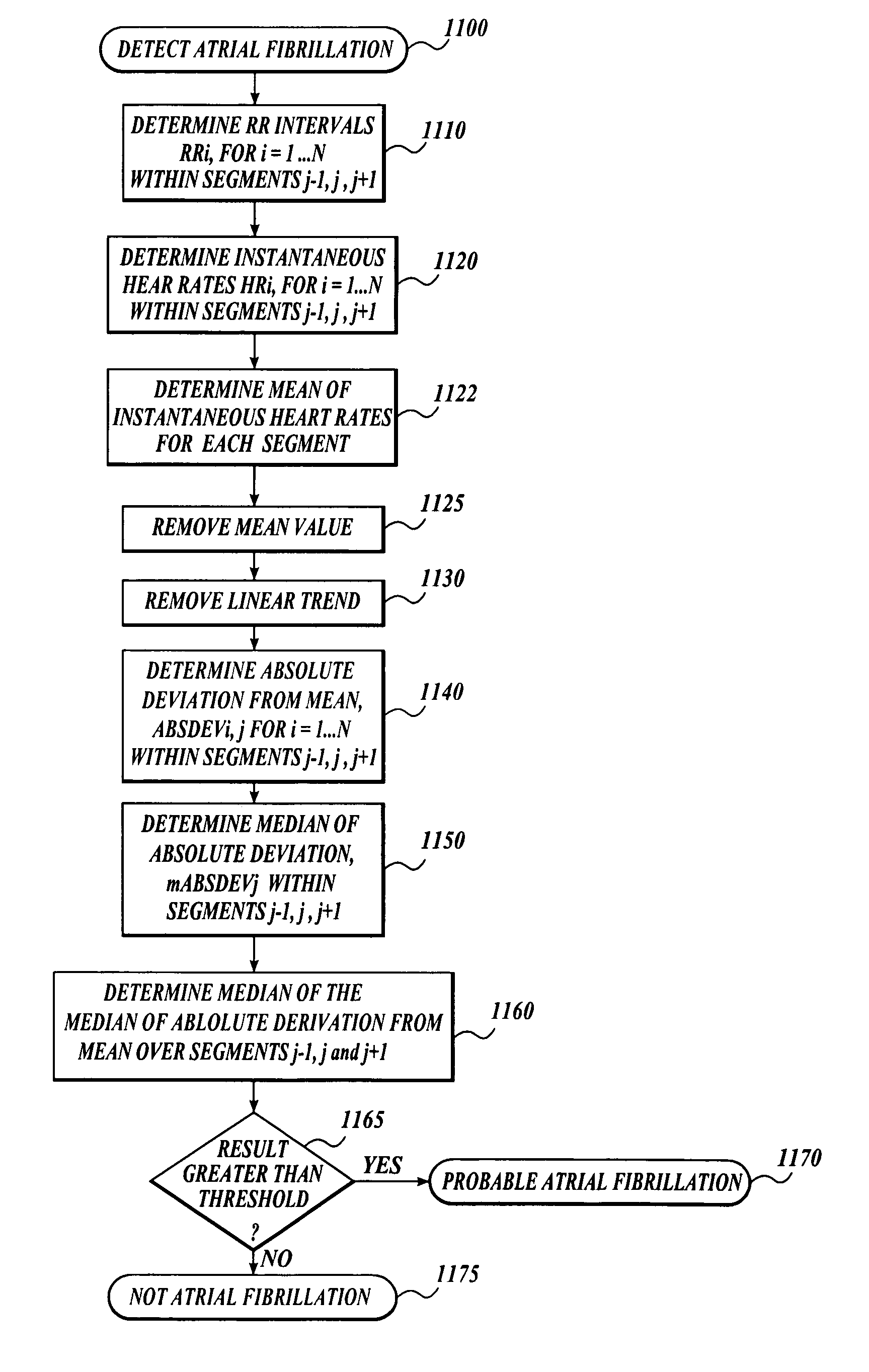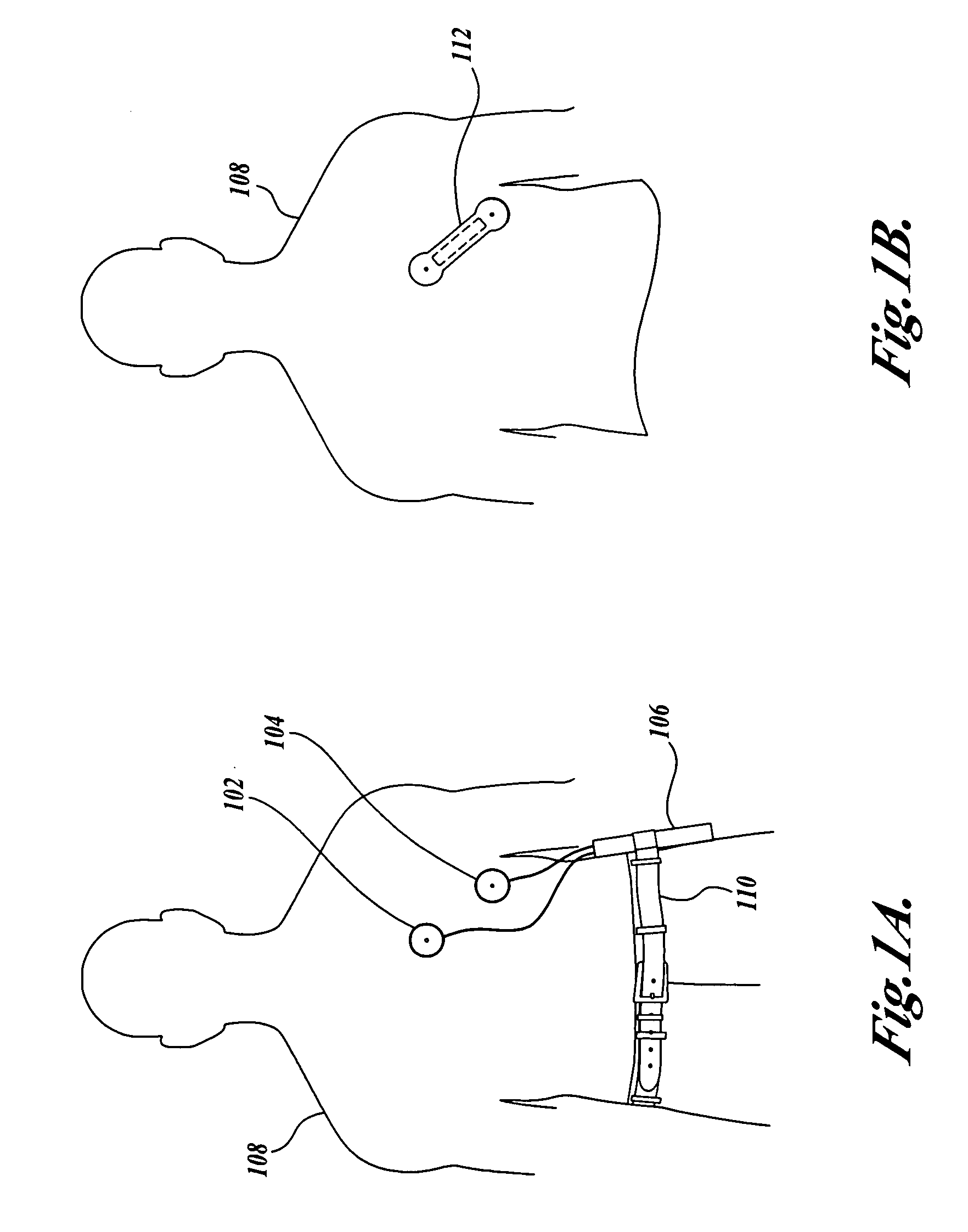Long-term monitoring for discrimination of different heart rhythms
a heart rhythm and long-term monitoring technology, applied in the field of monitoring, detection and discrimination of heart rhythm disturbances, can solve the problems of increased risk of stroke and death, death if not treated promptly, and death within minutes
- Summary
- Abstract
- Description
- Claims
- Application Information
AI Technical Summary
Benefits of technology
Problems solved by technology
Method used
Image
Examples
Embodiment Construction
[0059]A system and a method for detecting cardiac fibrillation and / or for discriminating between classes of arrhythmia is disclosed. In one embodiment, a method and apparatus for long-term monitoring and detection of atrial fibrillation, is disclosed. In another embodiment, a modified version of the method and a device are disclosed for discriminating heart signal data to detect and accurately identify and correctly distinguish life-threatening cardiac rhythms that require an electric shock (defibrillation) from other rhythms that do not require a shock, is described. While the system and method are ideally suited for detecting atrial fibrillation, or discrimination of life-threatening rhythms from other rhythms, the system and method may also find use in other environments. Furthermore, while the system and method are described in portable configurations and environments, the system and method may also find use in fixed and static environments. Thus, it is to be understood that the...
PUM
 Login to View More
Login to View More Abstract
Description
Claims
Application Information
 Login to View More
Login to View More - R&D
- Intellectual Property
- Life Sciences
- Materials
- Tech Scout
- Unparalleled Data Quality
- Higher Quality Content
- 60% Fewer Hallucinations
Browse by: Latest US Patents, China's latest patents, Technical Efficacy Thesaurus, Application Domain, Technology Topic, Popular Technical Reports.
© 2025 PatSnap. All rights reserved.Legal|Privacy policy|Modern Slavery Act Transparency Statement|Sitemap|About US| Contact US: help@patsnap.com



